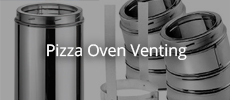Originally posted by Travelinman
View Post
X
-
The ash simply is filling in gaps...not required for the curing process. Hauling ash out from the house to the newly built WFO will not aid in the curing fires...just makes an unnecessary job for you. As David pointed out above, whether you build on top of the cooking floor perimeter or around it, the oven will perform just fine as long as the cooking floor has a bit of room for movement during use (or can slide a bit). I built my dome on top of the cooking floor over 10 years ago and although I do have a couple of perimeter bricks with slightly raised edges, I have no real need to replace/repair any part of the well used oven fllor. Relax Chris...your build will be fine & fun
- Likes 1
-
The alternative to having the floor inside the dome is to build the dome on top of the floor. This has the advantage of not having to cut the floor bricks really accurately which can save a lot of time. Its disadvantage is that it makes it almost impossible to remove a floor brick that sits under the dome. This problem is scarcely a problem though because if any spalling takes place it will only occur in the bricks at the centre of the floor. If floor bricks are laid loose either dome on top or floor inside the dome, those gaps between the bricks are sufficient to accomodate thermal expansion.
Leave a comment:
-
Hello Mike:
In regards to ash in between FB floor bricks:
Does anyone use ash before firing? if I burn firewood in my house, why not put ash in spaces before the first fires?
Just a small question...not critical.
Chris
Leave a comment:
-
Normally, just a thin layer of damp sand with a handful of fireclay mixed in is laid on top of the insulating board using a notched tile trowel. This allows you to set the bricks to level if your FB is slightly uneven. Spaces between bricks should be minimal and quickly fill with ash. Since all the firebricks in the cooking floor do move a little with every firing & cooldown, you don't want to actually try to mortar them in place...just lay them level. The sand/clay mix doesn't "move" & once your floor is laid it'll stay pretty well in place.
p.s. Cardboard spacer board was not an original idea from me, but glad it will be useful for your build.
Leave a comment:
-
Thanks, Mike!
I will use your cardboard spacer idea.
My build is using very old unused FB. Although the herringbone idea makes sense, the type of brick will be difficult. I will update photos as a go.
What is best way to build floor, with a mortar or just clay and sand? Under floor and between bricks.
Thanks
Chris
Leave a comment:
-
Chris, since you are building your dome on the perimeter of your insulation sections, you will want to lay & level your cooking floor first. Most of us like the herringbone pattern because it is least likely to catch the edge of a pizza peel. Two things to think about: 1) Start your laying your pattern at the front opening area. Set the initial bricks down so you can mark and cut off the corner pieces, making a straight & solid brick entry. Doing it this way makes it unnecessary to have some little pieces "hanging" on up front to fill in gaps. 2) If you are going to build/use an Indispensable Tool (IT), you will want to set its hinge base level with the cooking floor. This is done by removing (or leaving out) the central floor brick and replacing it during the build with a wood block anchoring the IT. Once the build is complete, the wood block is pulled out and replaced with a firebrick.
The IT and its proper location/use during a WFO build has been documented and commented on in many places on the forum, should be easy to find with a search for
Indispensable Tool Construction Forno Bravo
Just double checking that you are setting your dome base bricks on the insulation pad with the cooking floor bricks just inside the perimeter. Folks generally mark, cut, & lay the cooking floor bricks first and leave a 1/8"-1/4" gap between the cooking floor and the dome perimeter to allow for expansion & movement during firings. Often just using a strip of cardboard around the cooking floor bricks is all you need. This cardboard burns out during the curing process and quickly fills with ash.
Leave a comment:
-
Well, I changed my plans and construction plans.
It was suggested that I do not put the CaSil on the bottom.
So I used my 42” diy pre-cast 6:1 wheel, and put it on the tile one the first layer. I then poured a larger ring around and over the pre-cast with 5:1 perlcrete. I used the 5:1 ratio to strengthen the outer rim under the heavy dome and soldiers.
I used loose bricks as a form with a plastic edge, which I easily removed.
I used light brown paper under the new rim to keep slurry from filling the spaces between tiles. This will rot or burn away, I think.
(I read here that perlcrete was stronger than vermcrete, so I used that for base. Dome will be either)
The pipes are for my controversial water piping to heat my spa with residual heat after cooking. This may be a bad idea, I can fill pipes with Percrete later, if I have to..
Next the 2” CaSil insulation, soldiers and FB floor!
Question: Would you build floor or soldiers first? It would be easier access to start with floor, but maybe I am missing something.
Thanks, Chris
Leave a comment:
-
Chris, the WFO in Sorrento that I used was built into the side of a hill. Based on the extremely poor heat retention I experienced, I suspect only the dirt backfill was "the insulation". It certainly seemed more oriented to live fire cooking or the hillside soil was moist enough when I was there to absorb a lot of the fire's heat. It's really fun to be allowed to work/access other WFO systems, especially in other countries at active sites.
My understanding on old WFO insulations, the use of clay/straw (like cobb ovens do today) & pumice type stone were used. Don't really remember when I was in Pompeii anything about the oven insulation...but I suspect it's documented somewhere on the Internet by now. Certainly people didn't worry as much about using up resources inefficiently in the centuries before us, so I'm sure they used a LOT more wood with those old, poorly insulated (compared to today's standards) masonry/rock ovens.
Certainly people didn't worry as much about using up resources inefficiently in the centuries before us, so I'm sure they used a LOT more wood with those old, poorly insulated (compared to today's standards) masonry/rock ovens. 
Leave a comment:
-
Mike:
Nice photos of the ancient WFO in Sorrento!
I was looking for the old photos of the pizza oven that I visited in Madrid. I took a couple of the internet. They let me use their tools and spin at few suckling pig platters in their large WFO. "The oldest ongoing restaurant in the world" Restaurante Botin
I opened a restaurant (Trattoria) in 1992. Before I opened, I visited many restaurants in USA and Europe. I ended up buying a reasonable Italian WFO and hauling to the mountains from LA. I remember the difficult job of lifting the heavy oven core into position on a steel stand. It did not come with instructions!!
That little 32"-34"" oven raged seven days a week for 8 hours a day; lots of Pizzas and baked dishes in an Exhibition Kitchen.
Note: We did not insulation around the core, very well. Some fiberglas. The core purchased did not seem to have a lot of lighter insulation. I am glad we are discussing the insulation, but it really worked out well for us with a simple vented enclosure. So I will continue to read and learn, but many dishes around the world were built without CaSi and modern techniques.
Mike, How did the insulate the Sorrento WFO in your photos? How did they insulate older Pompeii ovens. I did not ask, when I visited the Naples areas a couple of years, ago.
Thanks, Chris
2 Photos
Leave a comment:
-
Sorry Chris, I had a brain fart. Yes 6:1 is slightly better insulation, but its compression strength is not nearly as good (shown in the table above that David S posted). What that translates to: you probably would get some cooking bricks "sinking in" a bit in spots over time or and if your dome is laid directly on it, the dome will likely shift & crack. Putting the FB board on top evenly distributes the weight loads & your cooking floor will stay level.Originally posted by Travelinman View PostSmall question?
Isn't a 6:1 more insulation that a 5:1? I base that on the dome being a 10:1?
Thank you,
ChrisLast edited by SableSprings; 02-24-2021, 09:09 AM.
Leave a comment:
-
Small question?
Isn't a 6:1 more insulation that a 5:1? I base that on the dome being a 10:1?
Thank you,
Chris
Leave a comment:
-
That is the rusted metal door for the oven. If you look closely around the door edges you'll note the metal had rusted completely through in spots. I'm pretty sure the oven had no insulation to speak of either...I could do pizzas at a relatively low temp while having a pretty good active fire (and moving the coals constantly across the floor to recharge after each pizza). I barely could coax out enough retained heat to do bread loaves...they were pretty "blond" but with a little Italian wine, still tasted good!
Leave a comment:
-
Hey mike just curious what that little door to the right of the oven is above??
Leave a comment:





Leave a comment: